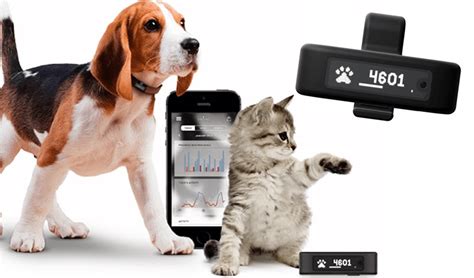Introduction
As our beloved furry companions age, their needs and requirements change. Senior pets face unique challenges that can make it difficult for them to enjoy their golden years to the fullest. However, advancements in technology have led to the development of innovative pet wearables that can help improve the lives of senior pets and provide peace of mind for their owners.

The Rise of Pet Wearables
According to the American Pet Products Association (APPA), the pet industry is expected to reach a staggering $123.6 billion in 2025. A significant portion of this growth is attributed to the rising popularity of pet wearables.
Pet Wearables VS Traditional Methods
Traditionally, pet owners have relied on physical checkups and observations to monitor their pet’s health and well-being. However, pet wearables offer a more comprehensive approach by providing real-time data and insights.
Table 1: Pet Wearables VS Traditional Methods
| Method | Advantages | Disadvantages |
|---|---|---|
| Pet Wearables | * Real-time data collection * Early detection of health issues * Remote monitoring * Personalized insights * | * Cost * Battery life * Data privacy concerns * |
| Traditional Methods | * Lower cost * No battery life concerns * No data privacy issues * | * Limited data * Infrequent monitoring * Subjective observations * |
Types of Pet Wearables for Senior Pets
The market for pet wearables is vast and ever-evolving, with a wide range of devices tailored to the specific needs of senior pets.
Location Trackers
Location trackers are essential for senior pets who are prone to wandering or getting lost. These devices use GPS or Bluetooth technology to monitor your pet’s location in real-time, allowing you to track them down easily if they go missing.
Activity Trackers
Activity trackers record your pet’s activity levels, sleep patterns, and calories burned. By tracking these metrics, you can identify any changes in your pet’s behavior or health, and make necessary adjustments to their care.
Health Monitors
Health monitors provide advanced insights into your pet’s vital signs, including heart rate, temperature, and respiratory rate. Some health monitors even send alerts to your smartphone if they detect any abnormalities, allowing you to seek immediate veterinary attention.
Dispensing Devices
Dispensing devices are designed to automatically deliver medications or supplements to your pet at scheduled intervals. This can be especially beneficial for senior pets who have difficulty swallowing pills or who require regular medications.
Benefits of Pet Wearables for Senior Pets
Pet wearables offer numerous benefits for senior pets, including:
- Improved health monitoring: Real-time data from pet wearables can help detect health issues early on, allowing for prompt treatment and a better prognosis.
- Increased safety: Location trackers provide peace of mind by allowing you to track your pet’s whereabouts in case they wander off.
- Better bond: Pet wearables can help you better understand your pet’s needs and behaviors, leading to a stronger bond between you and your companion.
- Increased lifespan: By proactively monitoring your pet’s health and well-being, pet wearables can help extend their lifespan and improve their quality of life.
Tips and Tricks for Using Pet Wearables
To get the most out of pet wearables, follow these tips:
- Choose the right device: Consider your pet’s specific needs and lifestyle when selecting a wearable device.
- Set realistic expectations: Pet wearables are not a substitute for veterinary care. They provide additional data and insights, but should not be relied upon as the sole source of information about your pet’s health.
- Monitor your pet regularly: Regularly check your pet’s wearable device to track their activity levels, health metrics, and location.
- Be prepared to take action: If you notice any unusual data or alerts from your pet’s wearable device, don’t hesitate to contact your veterinarian.
Market Insights
The pet wearable market is projected to reach $3.5 billion by 2025, according to Grand View Research. This growth is being driven by a number of factors, including the increasing adoption of pets, the aging population of pet owners, and the growing awareness of the benefits of pet wearables.
Future Trends
As technology continues to advance, we can expect to see even more innovative pet wearables hitting the market. Some potential future trends include:
- Wearables for specific health conditions: Pet wearables tailored to specific health conditions, such as diabetes or arthritis, will become more common.
- AI-powered wearables: AI-powered pet wearables will provide even more personalized insights into your pet’s health and well-being.
- Interconnected devices: Pet wearables will become increasingly interconnected with other devices, such as smart home devices and veterinary clinics, creating a more comprehensive ecosystem for pet care.
Conclusion
Pet wearables are revolutionizing the way we care for our senior companions. By providing real-time data and insights, pet wearables help us detect health issues early on, improve our pet’s safety, and strengthen the bond between us. As technology continues to advance, we can expect to see even more innovative pet wearables emerge in the future, further enhancing the lives of our beloved furry friends.
Call to Action
If you’re looking for ways to improve the life of your senior pet, consider investing in a pet wearable device. With so many different types of devices available, you’re sure to find one that meets your pet’s specific needs and provides you with peace of mind.





















